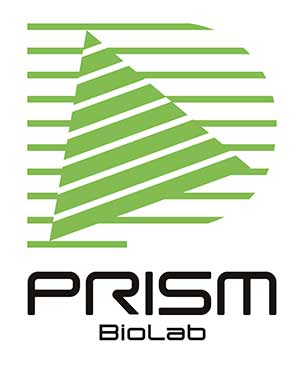Covalent Inhibitors in Drug Discovery: Current Applications
Aspirin is now known as a covalent modifier of COX-2 through acetylation of Ser530. 1), 2) Since the advent of aspirin in 1899, covalent inhibitors have occupied meaningful range of new drugs. Penicillin, Fluorouracil, Omeprazol, Bortezomib and more covalent drugs have been developed in over 120 years. Even though covalent inhibitors possesses both advantages and...
Integration of Technologies in Drug Design: Molecular Dynamics and Deep Learning
Integration of technologies is a fascinating approach for innovation. A synergy of technologies in high compatibility would increase the success rate in drug design, discovery and development, and reduction of time and cost as well. We are eager to integrate novel technologies in our drug discovery process as the endeavor for the accuracy and acceleration....
Geometric Deep Learning for Structure-Based Drug Discovery
Humans and molecules are living in the same, three-dimensional world. Drug discovery and development is a great work of managing our internal and enemies’ (like virus’) external system by a precisely and optimally elaborated molecule. Molecule-molecule interaction like PPI needs to be analyzed in a three-dimensional world for deep recognition, hence prediction and design of...
Deep Learning Is Enabling Structure-Based Drug Design: Current Approaches
Deep Learning Is Enabling Structure-Based Drug Design: Current Approaches Structure-based drug design (SBDD) or discovery is one of the state-of-art approaches. Computational aid has allowed medicinal chemists to accelerate the drug design in the discovery stages. Now, deep learning (DL) models are enabling the efficient support of SBDD. Emerging DL technologies have potential to lead...
Don’t Speed Down by AI/DL: Acceleration and Success Rate Improvement Possible?
AI/DL technologies provides us a booster for speeding up the drug discovery and development. No one would doubt it in this age of prevalent AI-driven business. However, it is noteworthy that AI/DL often slows down the research. Even though the ability of AI/DL for the acceleration of not only the entire process but also each...
ChatGPT in Drug Discovery and Development: How do you use it?
ChatGPT is a well-known large language model (LLM) and is often used in our daily life and business scenes. Its application is expanded from a simple text to a picture and its potential is hard to imagine now. ChatGPT or other LLM could help acceleration of drug discovery and development as well. The issue would...
Computer-aided or Computer-driven in Drug Discovery?
Do you think it is the age of computer-aided drug discovery (CADD)? The concept of CADD was developed in 1970s Fortune magazine popularized the name.1), 2) It is no doubt that CADD including SBDD and LBDD is raising its value owing to the emergence and sophistication of quantum mechanics, AI-based predictions3) and the intriguing improvement...
in silico Peptide Design: Comparison of Similarity-based and Machine learning-based Scorings
Rational and reliable in silico design of a peptide with a high affinity for a specific target protein has been an intense field of research. Natural peptides only possess 20 amino acids and one may imagine that in silico sequence generation would a trivial task with machine learning. However, as the prediction of protein-protein interactions...
Virtual Screening with Machine Learning: A Substitute for HTS?
Undoubtedly, HTS (high-throughput screening) is a powerful method for library screening.1) Pharmaceutical companies have developed and expanded their original library by internal synthesis and purchase from other institutes. But in a huge real library that quality control and storage cost are annoying issues. It is often the case with library-stored hits that their activity is...
Drug Design by Sequence Not by Structure of Proteins
Idealistically speaking, it would be fantastic if drug molecule is readily designed just by the sequence of the target of interest. Structure-based drug design (SBDD) is the currently major approach for drug discovery and development stage. The three-dimensional structure is a key resource even though the advent of AlphaFold2 and RoseTTAFold has offered us beautiful...

